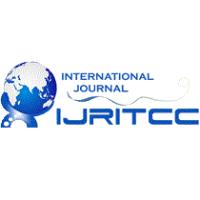Article,
New Radio Navigation System for Aircraft Blind Landing
International Journal on Recent and Innovation Trends in Computing and Communication, 3 (2): 626--628 (February 2015)
DOI: 10.17762/ijritcc2321-8169.150242
Abstract
A new radio navigation system for aircraft blind landing is proposed. This system is based on measuring the phase shifts of signals received from four ground transmitters (antennas), placed on corners of the runway strip. The received signals phase shifts provide distance measurements accuracy in millimetres. The reception of these signals is made on the onboard antenna located on the aircraft. Three ground antennas out of the four will be sufficient for determining the location of the aircraft. As a result of the analysis, the coordinates of the onboard antenna, the coordinates of the centre of mass of the aircraft, and axis coordinate of the aircraft determined with respect to the runway coordinate system
